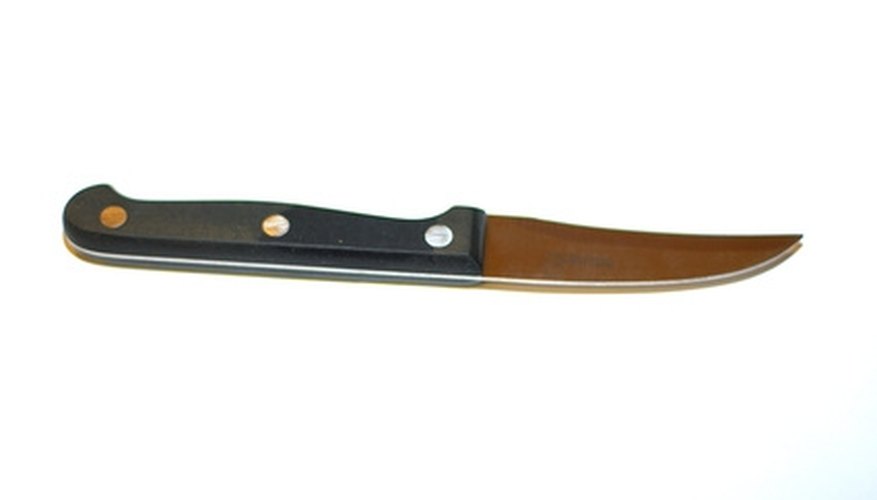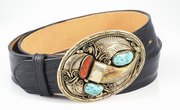
Bluing is a technique that is used for most firearms to establish a corrosion-resistant finish. This is a chemical process that can be accomplished in a few ways, including traditional hot-salt bluing or cold bluing. Bluing works on a variety of metals and alloys including carbon steel, hardened steel and iron. Bluing is not effective on stainless steel. If you wish to blue your knife blade to add corrosion protection, this can be accomplished in the same way as bluing gun metal.
Items you will need
Naval Jelly (you can use white vinegar as a substitute)
Crayon
Degreaser
Sharpening device
Heat source (stove or propane torch)
Clean micro-fiber cloth
.0000 steel wool mesh
Sharpen the blade and remove any subsequent burring. Apply degreaser to the blade and clean it thoroughly. No honing oil or residue can be present during the bluing process.
Rub Naval Jelly over the knife blade thoroughly and allow it to soak in for an hour. Dry the blade carefully.
Rub a piece of fine steel wool mesh over both sides of the blade. Rub just enough to slightly scuff the surface.
Heat the blade for 15 to 20 minutes in an oven set on 325 Fahrenheit if the handle is metal. If you have a wood or phenolic handle, use a propane torch to heat the blade only for about two minutes.
Mark the sharpened edge with a crayon. This will keep the bluing from adhering to the sharpened edge. Apply bluing solution to a clean micro-fiber cloth. Rub the bluing solution into the blade, working from hilt to tip until the blade is coated thoroughly. Flip the blade over and repeat. Allow the blade to dry for 24 hours before adding a second coat if desired.
Warnings
- Apply bluing only in a well ventilated area.
- Use caution at all times when handling your blade.
Tips
- Note that bluing will come off as the knife needs to be sharpened. Use a V notch sharpener rather than a stone to avoid ruining the finish.
References
Tips
- Note that bluing will come off as the knife needs to be sharpened. Use a V notch sharpener rather than a stone to avoid ruining the finish.
Warnings
- Apply bluing only in a well ventilated area.
- Use caution at all times when handling your blade.



